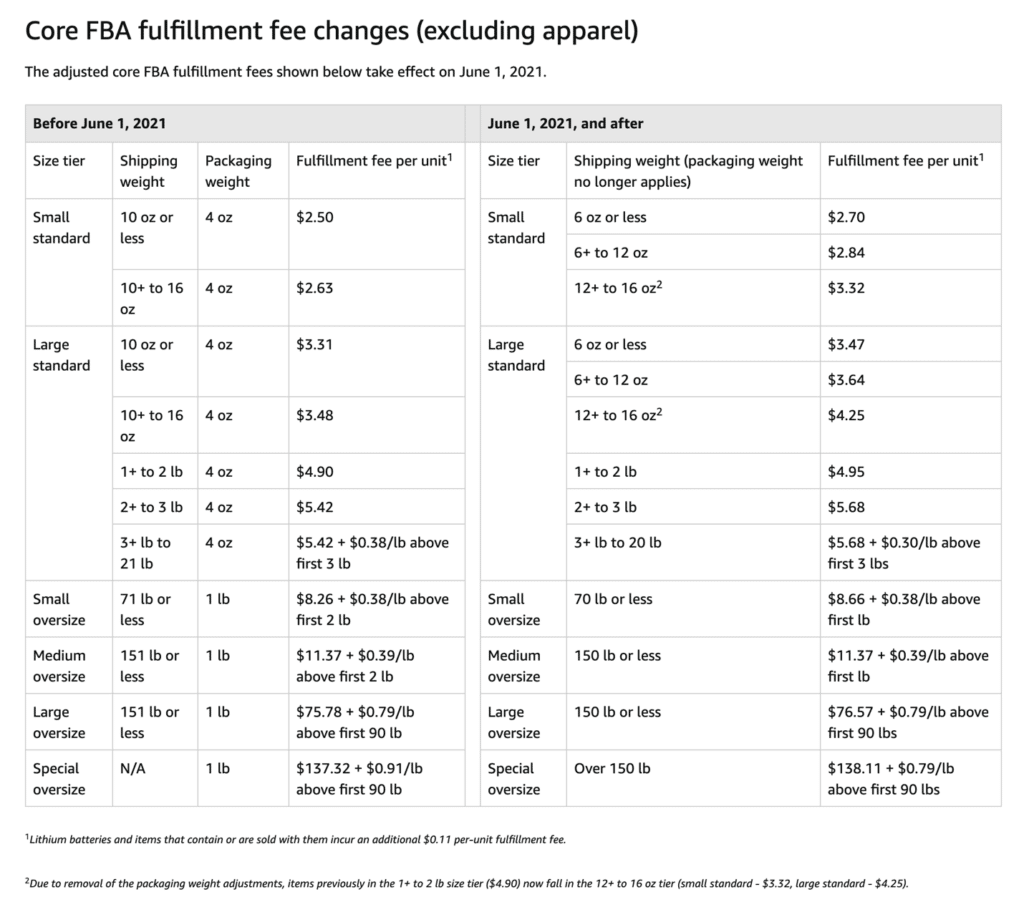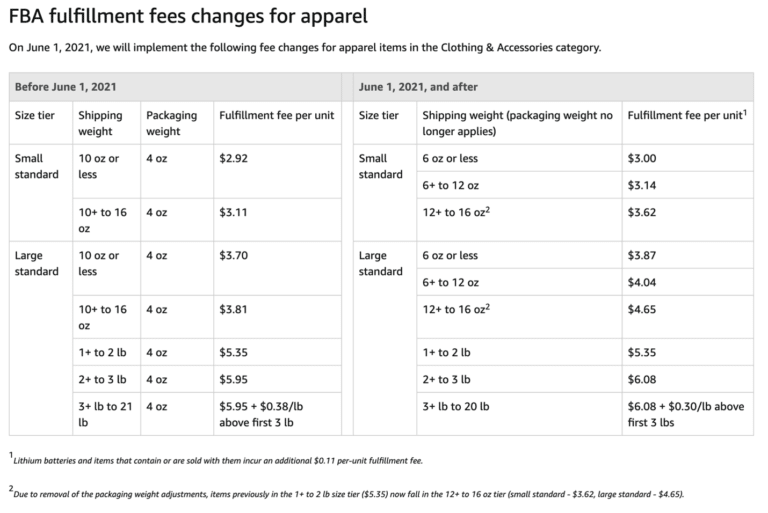What to do With Higher Amazon Shipping Rates?
From Amazon:
“Now, as vaccines are being distributed and we see a path to normalcy, our next fee adjustment in the US has been scheduled for June 1, 2021. Most referral fees will not change, and we are making only modest increases (about 2-3% on average) to fulfillment fees, in line with or below industry averages. We will also reduce certain fees, like the returns processing fee, which reflects feedback we have received from sellers and our continued efforts to reduce costs.”
Don’t get too excited about Amazon’s feeble attempt to lull you into complacency with the promise of reducing “certain fees”. Shipping rates are going up, so let’s tackle how we can adjust for Amazon’s shipping inflation.
Size Matters!
When deciding on packaging and product launches, knowing the size and weight limits can be the difference between profit and break-even (or worse!). For example, one client we worked with made a fatal mistake that took their business to the grave. They searched out the best opportunities on Amazon and where they could step into some category holes and capture sales. The category was runner rugs and doormats. There was a reason why there wasn’t a lot of competition in the runner and doormat space – they were heavy and oversized! This company did not account for how much amazon would charge for 27” wide and 8” diameter rugs that weighed up to 10 lbs. They send pallets and pallets in for FBA (fulfilled by Amazon) shipping. While they started selling well, after a month they realized they were in the red because of the Amazon fee and the oversized shipping costs. This company was not equipped to do fulfilment in-house and decided to fail instead with a 3PL that ultimately charged similar rates as Amazon. Don’t get caught with your rugs in a bunch! Study up and calculate your costs before risking your time and money on a new product launch!
Standard Size
A standard-size item is one that, when fully packaged, weighs 20 lb or less and does not exceed:
- 18 inches on its longest side
- 14 inches on its median side
- 8 inches on its shortest side
Any item exceeding these dimensions is considered oversize. Generally, we see that the most profitable and successful Amazon businesses have a product selling between $20 and $30, is standard size or smaller, and has some barrier to entry due to development cost or accessibility. Good branding and a trademark help immensely, too, for marketing and PPC purposes – but you can read about PPC in our other blog here.
Oversize
The table below shows the most recent breakdown of small/large stand-size, small oversize, medium oversize, large oversize, and special oversize. If your company is developing new product often, you can log into your Amazon Seller Central account and find the most updated charts for weights and dimensions. Another client of ours developed some sweet daddy snorkeling flippers that were neither 14 wide nor 8 inches tall, but were just over 18 inches long. They couldn’t raise their price enough to cover their shipping and still keep their ranking. They were caught in the middle of sales volume and profit. Needless to say, they also went out of business. This flipper pricing example has flapped us into the idea that it just might be okay to have have an oversized or heavy item (gasp!) if your pricing and profit are big enough. We manage a rubber tile company used for home gyms or barn stalls. These are thick rubber mats and super heavy, but priced high enough to cover the prime shipping rates. Moral of the story? Make and sell expensive things if you can. Don’t make heavy, big cheap things. Where do your products fall on this Amazon Shipping chart?

Amazon Fulfillment Fee Changes
We all cringe a little when Amazon announces new updates to fee structures. But after reviewing the changes to take effect in June, 2021, It’s not all doom and gloom! If fact, I think it makes sense. One major change is that AMZ is not separating the weight of the packaging and the product. They are combing them into one weight/dimension category. For example, don’t ignore the footnote of this pricing chart:
“Due to removal of the packaging weight adjustments, items previously in the 1+ to 2 lb size tier ($4.90) now fall in the 12+ to 16 oz tier (small standard – $3.32, large standard – $4.25).”
See – good news for many sellers in that weight/size tier. Upon closer look, though, basically every shipping tier is more expensive as inflation hits the US and newer covid costs are taken into account. We see some of the sharpest increases in shipping cost in the new small standard 12-16 oz category at $3.32 up from $2.63. We also see big jumps in the Large Standard 6-12 oz categories. You might consider seeing what you can do to adjust your packaging process and materials if you are on the lower edge of one size tier and think you can jump down to the next lower tier. If you can’t feasibly raise your price (this is against Jeff Bezos’ philosophy and driven into the Amazon algorithms to encourage sellers to offer the best products at the lowest cost online), then you need to consider ways to cut costs; shipping and packaging can aid in your efforts to increase your bottom line. You can find this chart in Seller Central by following these bread crumbs:
Help / Getting started with Fulfillment by Amazon (FBA) / FBA features, services, fees, and resources / 2021 US FBA fulfillment fee changes

If you’re selling apparel, you’re not off the hook! In fact, apparel shipping prices are actually higher for each size tier. Here is the chart for your reference.

Amazon Changes and Sellers Must, Too!
Every good seller will stay up to date with the major changes that Amazon is inflicting upon us. We find that with some ingenuity, most companies can make adjustments (even minor ones) that result in cost savings. An apparel company we manage sells winter coats on Amazon. They wanted to ship them in bags that were 20” x 20” x 8”. We had them fold the coats twice and pack them tightly into sturdy zip bags. This brought them down one shipping tier and resulted in savings of $4,725 over three months of selling. We hope these updated charts can assist you in adjusting your packaging and product planning. If not, you’ll be able to more accurately plan financially for what is coming and let this data help drive your production decisions. Happy selling!
